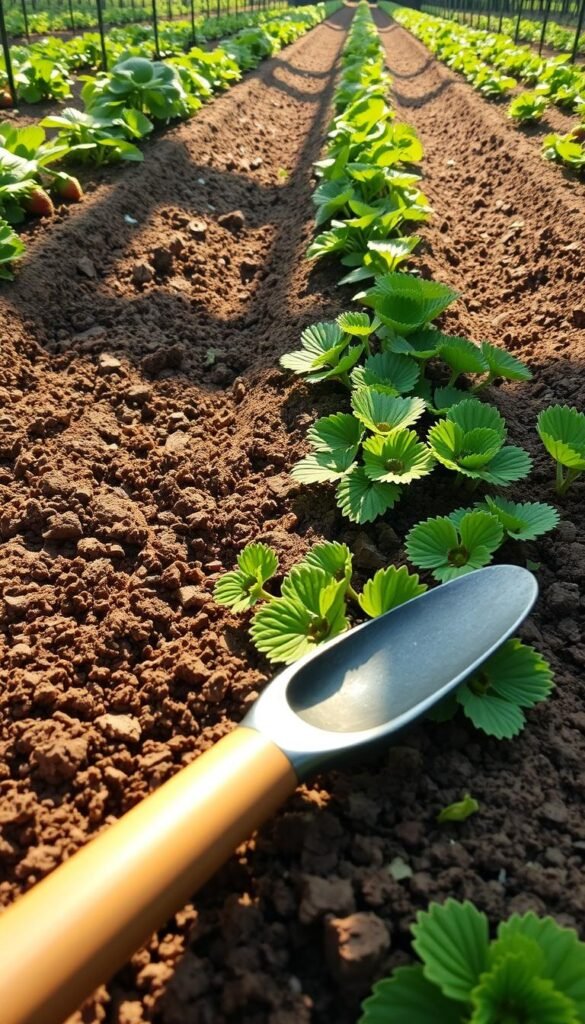Nothing beats biting into a sun-warmed berry picked straight from your patch. But getting those juicy rewards requires more than just sunshine and water. Delicate plants need precise nutrition to thrive without sacrificing flavor or yield.
Unlike heavy-feeding crops, these fruits demand a light touch. Too much nitrogen creates lush leaves but few flowers, while imbalanced feeding invites disease and weak roots. That’s where natural amendments shine. They feed plants slowly, matching their modest appetites while building healthier soil ecosystems.
Two organic powerhouses stand out for nourishing your patch: decomposed plant matter and aged animal waste. Each offers unique benefits, but choosing wisely depends on your soil’s needs and local climate. For example, coastal gardeners might lean toward seaweed-based options, while others prefer balanced nutrient blends tailored for acidic soils.
This guide cuts through the confusion, showing how to boost harvests without chemicals. You’ll learn to read your plants’ signals, adjust feeding schedules, and create a self-sustaining system that keeps producing year after year. Let’s dig into the dirt on making smart, sustainable choices for your sweetest crop yet.
Getting to Know Your Strawberry Garden’s Nutritional Needs
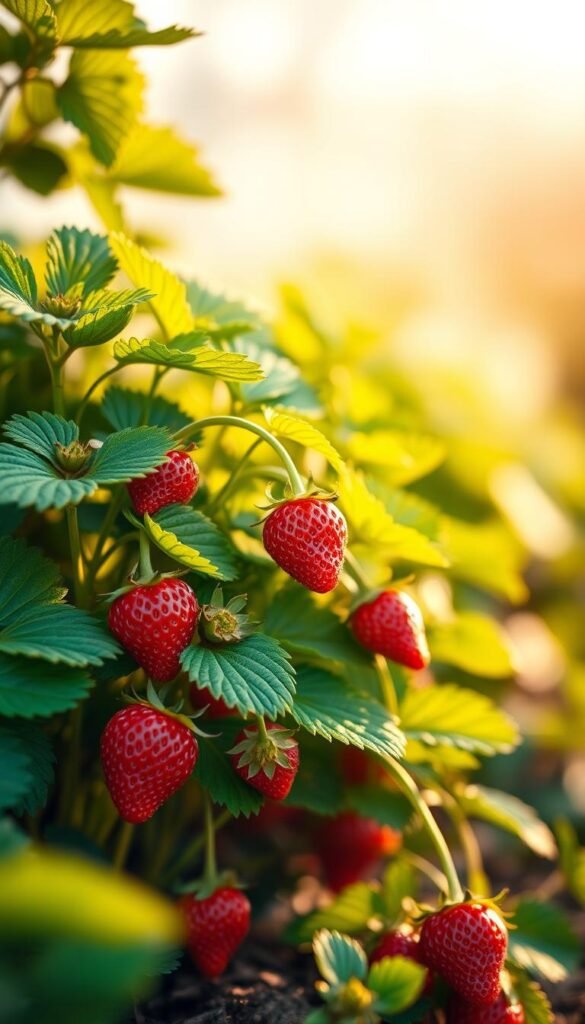
Growing plump, flavorful berries begins with understanding their unique dietary preferences. These perennial favorites thrive on a precise mix of elements – too little leaves them struggling, while too much creates more problems than solutions.
Essential Nutrients for Vigorous Growth
Three primary elements drive healthy development:
| Nutrient | Role | Optimal Timing |
|---|---|---|
| Nitrogen | Supports early leaf growth | Early spring only |
| Phosphorus | Strengthens roots & flowers | Pre-bloom phase |
| Potassium | Enhances fruit quality | Flowering through harvest |
Secondary players like calcium prevent blossom-end rot, while magnesium keeps leaves vibrant. Trace minerals act as plant vitamins – small amounts make big differences in disease resistance and sugar production.
Recognizing Signs of Over-Fertilization
Watch for these red flags:
- Lush leaves with few flowers
- Yellowing leaf edges
- Crunchy, dry soil surface
If your plants resemble leafy shrubs rather than fruit producers, cut nitrogen immediately. Switch to phosphorus-rich amendments to redirect energy toward flower formation.
Organic Fertilizers: Benefits and Key Considerations
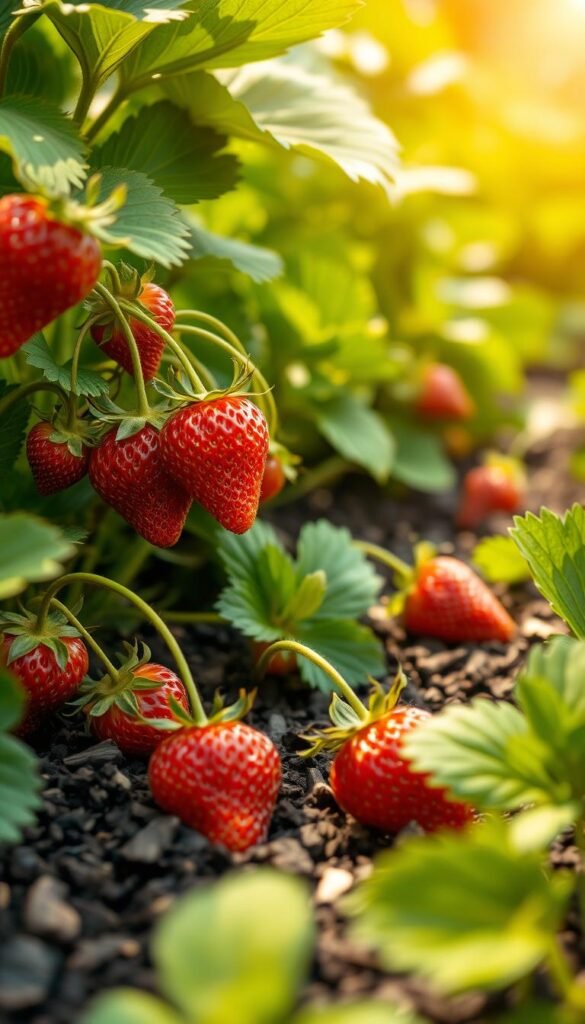
The secret to thriving berry patches lies beneath the surface. Organic amendments work like nature’s multivitamin, feeding your plants while creating a living soil ecosystem. Unlike synthetic options, these natural solutions build resilience season after season.
How Organic Inputs Improve Soil Health
Think of organic fertilizers as soil architects. They:
- Boost microbial activity with food for earthworms and bacteria
- Create air pockets through improved texture
- Act like sponges, holding 20% more moisture in sandy soils
This underground teamwork releases nutrients gradually. Your plants get steady meals instead of overwhelming feasts. Over time, organic matter forms humus – a dark, crumbly layer that stores nutrients like a pantry.
Balancing Nutrients for Optimal Fruit Production
Timing matters most with slow-release formulas. Apply them 4-6 weeks before flowering to sync nutrient availability with bloom cycles. For established beds, top-dress in early spring and water thoroughly.
Watch for these signs of success:
- Deep green leaves without excessive foliage
- Consistent flower clusters
- Firm, sweet berries
Struggling with yellowing leaves or poor yields? Test your soil’s pH and nutrient levels. Many state extensions like the University of Minnesota offer affordable testing kits for precise balanced nutrient management.
Preparing Your Soil: pH, Drainage, and Organic Matter
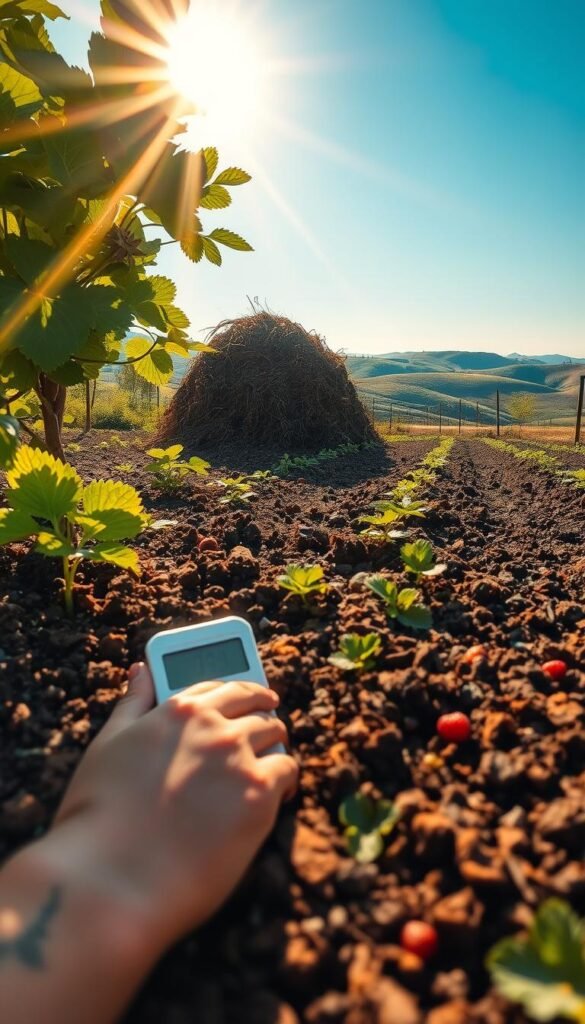
Great strawberries begin with perfectly balanced soil. Start by testing your dirt’s pH – these fruits thrive in slightly acidic conditions between 5.3 and 6.8. A simple soil test kit reveals whether you need to adjust levels, a process that can take months. Acidic soils? Add lime. Alkaline? Work in elemental sulfur. Patience pays off here – rushing pH changes stresses plants.
Drainage makes or breaks your crop. Soggy roots invite rot and disease, so watch for pooling water after rain. If puddles linger, try these fixes:
- Build raised beds (6-8 inches high)
- Mix coarse sand into clay-heavy soil
- Install French drains for severe cases
Organic matter transforms struggling dirt into berry paradise. Mix 3 inches of compost into planting areas to:
- Boost nutrient retention by 40%
- Create air pockets for stronger roots
- Help soil hold moisture without drowning plants
This groundwork matters most. Well-prepared earth lets plants access nutrients efficiently, leading to sweeter harvests and fewer pest issues. Skip this step, and even premium fertilizers underperform.
Fertilizing Your Strawberry Garden Organically: Compost vs. Manure
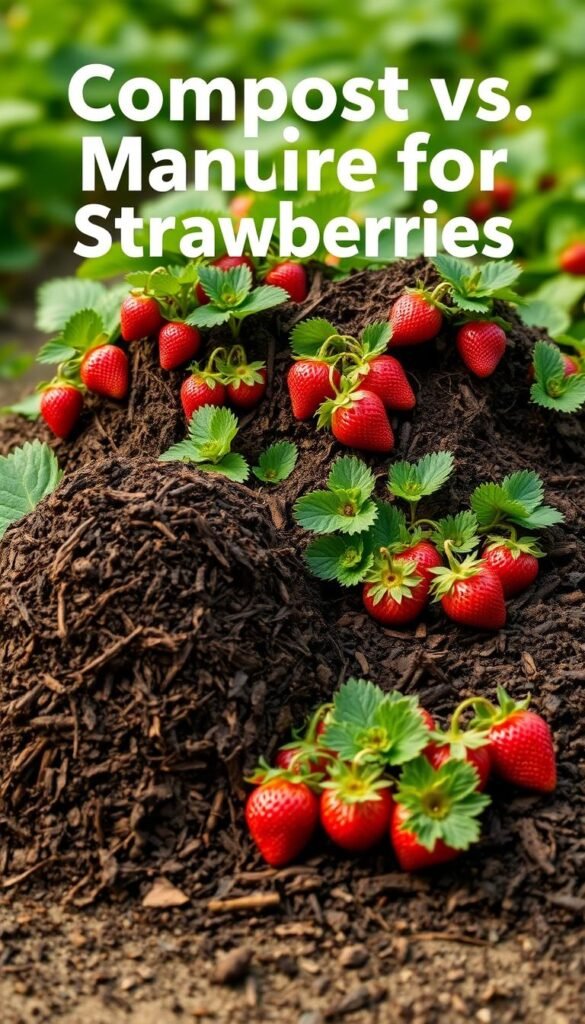
What you mix into your soil determines whether plants pump out bland fruits or sugar-packed gems. While both compost and manure feed hungry roots, their approaches differ like night and day.
Decomposed plant matter offers balanced nutrition without overwhelming delicate roots. Its secret weapon? A buffet of minerals released gradually across the growing season. This steady supply prevents leafy overgrowth while encouraging plump berry formation.
Animal-based amendments pack more punch but come with risks. Fresh manure contains salts that can burn roots and invite disease. Chicken varieties rank worst, with salt levels 3x higher than compost. Always age manure 6+ months before use to reduce this hazard.
Here’s why most growers favor compost:
- Creates fluffy soil that holds moisture like a sponge
- Contains 40% less sodium than aged manure
- Feeds beneficial microbes that protect against rot
Apply 4 liters per square meter when transplanting or as a spring top-dressing. The magic happens underground – improved texture lets roots access water and nutrients more efficiently. You’ll see results in firmer fruits and fewer yellow leaves.
Remember: healthy soil grows resilient plants. By starting with gentle, nutrient-rich compost, you’re building a foundation for seasons of sweet rewards.
Diving into Compost: Types, Benefits, and Application Techniques
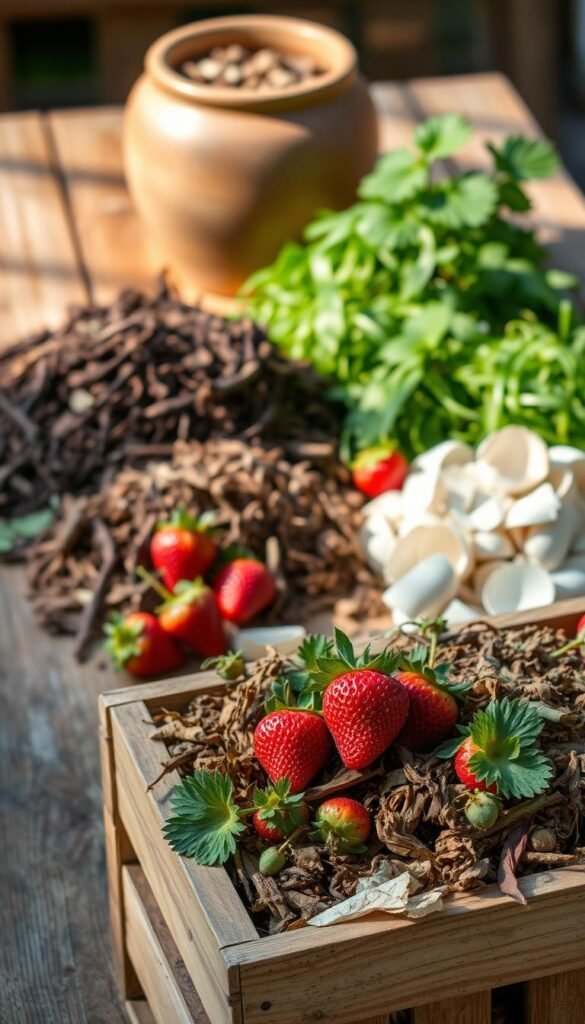
The right compost blend can turn your berry patch into a flavor factory. Not all decomposed matter works equally – some formulas boost sweetness, while others focus on disease resistance. Let’s explore how to match your soil’s needs with nature’s recyclable buffet.
Selecting the Best Compost for Your Strawberry Patch
Mixed compost reigns supreme for berries. Combining chicken manure, grass clippings, and kitchen scraps creates a nutrient timeline – quick-release nitrogen from greens and slow-fed potassium from woody materials. This combo prevents “feast or famine” scenarios in your soil.
| Compost Type | Nitrogen | Phosphorus | Best Use |
|---|---|---|---|
| Green Waste | Low | Moderate | Established beds |
| Kitchen Scrap | High | Low | New plantings |
Always check compost maturity. Properly aged piles reach 140°F, killing weed seeds and pathogens. Squeeze a handful – it should hold shape briefly before crumbling, like moist chocolate cake.
Application Rates and Timing for Compost
Spread 3-5 liters per square meter before spring growth surges. A second fall application helps plants store energy for winter. Top-dress around crowns, keeping material 2 inches from stems to prevent rot.
“Compost acts like a time-release capsule – feeding roots exactly when they need it most.”
Watch for earthworms! Their presence signals active microbial life. If your pile lacks these wriggly helpers, let it cure another month before using.
Exploring Manure Options: Horse, Chicken, and Other Sources
Not all manures work equally for sweet berries. While these natural fertilizers boost growth, their nutrient mixes vary wildly. Picking the right one keeps your plants productive without risking salt damage or weak fruit.
Understanding Nutrient Profiles of Different Manures
Horse manure offers modest nitrogen but lacks potassium and phosphorus. Use it as a base mixed with bone meal for balanced feeding. Cattle varieties shine with high potassium levels – perfect for enhancing berry sweetness. Their low salt content also protects roots from burn.
Chicken manure packs triple the nitrogen of other types. This turbocharges leaf growth but can delay flowering if overused. Always compost it for 6 months first. For clay soils, pig manure improves texture but requires extra potassium supplements.
Key takeaway: Match manure to your soil’s needs. Sandy spots love cattle’s moisture retention, while dense earth benefits from horse manure’s fluffing power. Test annually to maintain ideal nutrient ratios for disease-resistant plants and juicy harvests.

